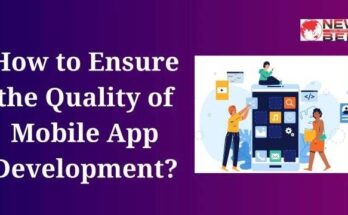Python Language is a high-level, versatile programming language known for its simplicity and readability. It is widely used in web development, data analysis, artificial intelligence, and more. Python’s syntax emphasizes code readability and allows developers to express concepts in fewer lines of code compared to many other languages.
It supports both procedural and object-oriented programming paradigms and has a vast ecosystem of libraries and frameworks to streamline development. Python’s versatility and ease of use make it an excellent choice for both beginners and experienced programmers.
What is Python?
Python is a versatile and widely-used high-level programming language known for its simplicity and readability. Created by Guido van Rossum and first released in 1991, Python has gained immense popularity in the world of software development due to its elegant and easy-to-understand syntax. It supports multiple programming paradigms, including procedural, object-oriented, and functional programming, making it suitable for a wide range of applications.
Python’s extensive standard library provides modules and packages for tasks such as web development, data analysis, machine learning, and more, simplifying development and reducing the need for reinventing the wheel. Its interpreted nature allows for rapid development and testing, making it an excellent choice for both beginners and experienced programmers. Python’s cross-platform compatibility ensures that code can run on various operating systems, further contributing to its appeal. Overall, Python’s versatility, readability, and community support make it a popular choice for developers across diverse domains.
What is Python Used for?
Python is a versatile and widely-used programming language known for its simplicity, readability, and a vast ecosystem of libraries and frameworks. It is used in a wide range of applications across various domains. Here’s a detailed explanation of what Python is used for:
Web Development:
- Web Frameworks: Python has numerous web frameworks like Django, Flask, and Pyramid that simplify the process of building web applications. These frameworks provide tools and libraries for handling tasks like routing, database interaction, and user authentication.
Data Analysis and Visualization:
- Data Analysis: Python is a preferred language for data analysis and manipulation. Libraries like Pandas, NumPy, and SciPy provide powerful tools for data manipulation and statistical analysis.
- Data Visualization: Libraries like Matplotlib, Seaborn, and Plotly allow users to create compelling visualizations from data, making it easier to understand and communicate insights.
Machine Learning and Artificial Intelligence:
- Python is the go-to language for machine learning and AI research. Libraries like TensorFlow, PyTorch, and scikit-learn provide tools and frameworks for developing machine learning models, neural networks, and natural language processing (NLP) applications.
Scientific Computing:
- Python is widely used in scientific computing for simulations, modeling, and analysis. Libraries like SciPy and SymPy provide functions for scientific and mathematical computations.
Automation and Scripting:
- Python is an excellent choice for automating repetitive tasks and writing scripts. It is commonly used for tasks like file manipulation, data extraction, and system administration.
Game Development:
- Python, with libraries like Pygame and Panda3D, is used for developing 2D and 3D games. While not as performant as some other languages, Python’s simplicity makes it suitable for rapid game prototyping and development.
Desktop Applications:
- Python can be used to create desktop applications with libraries like PyQt and Tkinter. These libraries provide tools for building graphical user interfaces (GUIs) for applications.
IoT (Internet of Things):
- Python is often used in IoT projects due to its simplicity and support for a wide range of hardware platforms. Libraries like MicroPython and CircuitPython are specifically designed for microcontrollers.
Web Scraping and Data Extraction:
- Python, along with libraries like BeautifulSoup and Scrapy, is commonly used for web scraping and data extraction. It helps in extracting data from websites for analysis or other purposes.
Education and Learning:
- Python is often recommended as a first programming language for beginners due to its easy-to-read syntax. It is widely used in educational settings for teaching programming concepts.
Natural Language Processing (NLP):
- Python is extensively used in NLP applications, such as chatbots, sentiment analysis, and language translation. Libraries like NLTK and spaCy provide tools for working with text data.
Databases and Backend Development:
- Python is used for developing server-side applications and connecting to databases. Frameworks like Django and Flask are used to build backend systems for web applications.
Cybersecurity:
- Python is used in cybersecurity for tasks such as penetration testing, network analysis, and creating security tools. Libraries like Scapy and PyCrypto are popular in this domain.
DevOps and Automation:
- Python is a valuable tool for DevOps tasks like automating deployment, monitoring, and server configuration management. Tools like Ansible and SaltStack use Python for automation.
Financial and Quantitative Analysis:
- Python is extensively used in the financial industry for tasks like risk management, algorithmic trading, and quantitative analysis. Libraries like QuantLib and pandas are commonly employed.
Why is Python so Popular?
Python’s popularity can be attributed to a combination of factors that make it a versatile and widely adopted programming language. Here are several key reasons why Python has become so popular:
Readability and Simplicity:
- Python’s syntax is clean and easy to read, emphasizing code readability and reducing the cost of program maintenance. This simplicity makes it an ideal language for beginners.
- Indentation is significant in Python, which enforces consistent and clean code formatting, reducing the chances of errors due to inconsistent styling.
Versatility and Portability:
- Python is a cross-platform language, meaning you can write code on one platform (e.g., Windows) and run it on another (e.g., Linux) with little or no modification. This versatility is essential for both developers and organizations.
- Python’s extensive standard library contains modules for various tasks, reducing the need for external libraries and making it a powerful tool for a wide range of applications, from web development to data analysis and machine learning.
Large and Active Community:
- Python has a massive and vibrant community of developers, which means there are plenty of resources, tutorials, and libraries available to help you solve problems and learn the language.
- The Python Software Foundation (PSF) oversees the language’s development and promotes its growth, ensuring its continued relevance.
Data Science and Machine Learning:
- Python has gained immense popularity in the fields of data science and machine learning. Libraries like NumPy, pandas, scikit-learn, TensorFlow, and PyTorch have made Python the go-to choice for data analysis and AI development.
- Jupyter notebooks, a popular tool in the data science community, supports Python, making it easy to create and share interactive data analyses.
Web Development:
- Python is used for web development through frameworks like Django and Flask, which simplify the process of creating web applications. Django, in particular, is known for its robustness and built-in security features.
- Python’s simplicity and readability also make it a suitable choice for writing scripts to automate web-related tasks.
Community Packages and Libraries:
- Python’s package manager, pip, makes it easy to install and manage third-party libraries and packages. The Python Package Index (PyPI) hosts thousands of open-source packages for various purposes, expanding Python’s capabilities.
Open Source and Free:
- Python is open source, which means it’s freely available and has a large ecosystem of contributors. This accessibility has contributed to its widespread adoption.
- The open-source nature of Python encourages collaboration and innovation, fostering the development of new libraries and frameworks.
Ecosystem for DevOps and Automation:
- Python is commonly used for scripting and automation tasks in the DevOps world. Tools like Ansible, Fabric, and Docker use Python as their scripting language, making it a valuable asset for system administrators and automation engineers.
Community-driven Learning and Resources:
- The Python community actively shares knowledge through forums, blogs, and online courses, making it easier for beginners to learn and advance their skills.
- Platforms like Stack Overflow offer extensive Python-related content, helping developers troubleshoot issues and find solutions quickly.
Job Opportunities:
- Due to its wide range of applications, Python developers are in high demand across various industries, leading to strong job prospects for those proficient in the language.
History of Python
The history of Python is a fascinating journey that spans several decades. Python is a high-level, general-purpose programming language known for its readability and simplicity. It has become one of the most popular programming languages in the world. Let’s delve into its history in detail:
Birth of Python (Late 1980s):
- Python was created by Guido van Rossum, a Dutch programmer.
- Guido started working on Python in the late 1980s, and the first public release, Python 0.9.0, was released in February 1991.
Python 1.0 (January 1994):
- Python 1.0 was the first official version of Python.
- It introduced features like lambda, map, filter, and reduce functions.
- Python started gaining attention in the programming community due to its simplicity and ease of use.
Python 2.0 (October 2000):
- Python 2.0 brought several important features, including list comprehensions and garbage collection.
- This version marked a significant milestone in Python’s development, making it even more powerful and versatile.
Also, Read This: What is Digital Marketing in Hindi
Python 3.0 (December 2008):
- Python 3.0, also known as Python 3000 or Py3k, was a major overhaul of the language.
- Guido van Rossum and the Python community decided to clean up the language by removing inconsistencies and old features that were no longer considered good practice.
- This transition caused some backward compatibility issues with Python 2, leading to a period where both Python 2 and Python 3 were in use.
Python 2 vs. Python 3 (2010s):
- The coexistence of Python 2 and Python 3 led to a long transition period.
- Python 2 officially reached its end of life on January 1, 2020, meaning it no longer received updates or security fixes.
- This transition was challenging for many developers and organizations, but it was necessary to ensure the language’s future.
Python’s Popularity (2010s – Present):
- Python’s simplicity and versatility made it extremely popular in various domains, including web development, data science, scientific computing, artificial intelligence, and more.
- Frameworks like Django and Flask made Python a top choice for web development.
- Libraries like NumPy, pandas, and scikit-learn made Python indispensable in data science and machine learning.
- Python’s readability and community support contributed to its widespread adoption.
Python Software Foundation (PSF):
- The Python Software Foundation was established in 2001 to promote, protect, and advance Python and its community.
- PSF helps manage the development of Python, organize conferences (such as PyCon), and support the Python community.
Python’s Future (2020s and Beyond):
- Python continues to evolve, with regular releases introducing new features and improvements.
- The Python community is actively involved in shaping the language’s future, addressing its shortcomings, and expanding its capabilities.
- Python’s use in emerging technologies like machine learning, data analysis, and automation ensures its relevance in the years to come.
Advantages and Disadvantages of Python
Python is a popular high-level programming language known for its simplicity and versatility. Like any programming language, it comes with its own set of advantages and disadvantages. Let’s explore these in detail:
Advantages of Python:
- Readability and Simplicity: Python’s syntax is clear and easy to read, which makes it an excellent choice for beginners. Its indentation-based formatting enforces good coding practices and readability.
- Large Standard Library: Python comes with a vast standard library that covers a wide range of tasks, from file handling to web development. This reduces the need for writing extensive code from scratch and accelerates development.
- Cross-Platform Compatibility: Python is available on various platforms, including Windows, macOS, and Linux. This cross-platform compatibility ensures that your code can run on different operating systems without major modifications.
- Community and Ecosystem: Python has a large and active community of developers. This means you have access to a wealth of resources, libraries, and third-party modules, making it easier to find solutions to problems and expand your capabilities.
Also, Read This: What is SEO? Type and Key Factors of SEO
- High Productivity: Python’s simplicity and readability translate into faster development times. This high level of productivity makes it a preferred choice for startups and small teams with limited resources.
- Dynamically Typed: Python is dynamically typed, meaning you don’t need to declare variable types explicitly. This can save development time and make code more flexible.
- Versatility: Python is a general-purpose language, making it suitable for a wide range of applications, including web development, scientific computing, data analysis, artificial intelligence, and more.
- Open Source: Python is open-source software, which means it’s free to use and can be modified and distributed without restrictions.
- Strong Support for Integration: Python offers easy integration with other languages like C, C++, and Java, allowing developers to leverage existing codebases and libraries.
- Great for Prototyping: Python’s ease of use and rapid development capabilities make it ideal for prototyping and quickly testing ideas.
Disadvantages of Python:
- Performance: Python is an interpreted language, which can lead to slower execution speeds compared to compiled languages like C++ or Java. While this may not be a concern for most applications, it can be a drawback in high-performance scenarios.
- Global Interpreter Lock (GIL): Python has a Global Interpreter Lock, which can limit its ability to utilize multiple CPU cores effectively. This can be a bottleneck for multi-threaded applications and CPU-bound tasks.
- Mobile Development: Python is not as commonly used for mobile app development as languages like Java or Swift. While there are frameworks like Kivy and BeeWare, mobile development in Python is less mainstream.
- Database Access: While Python has libraries and modules for database access, it may not be as efficient as some other languages for extremely high-performance database operations.
- Not Ideal for Memory-Intensive Tasks: Python may not be the best choice for applications that require a lot of memory or have strict memory constraints due to its memory management overhead.
- Less Popular for Game Development: Although Python has game development libraries like Pygame, it is not as commonly used for creating resource-intensive 3D games as languages like C++ or C#.
- Limited in Some Domains: In domains where performance and low-level control are critical, Python may not be the first choice. Examples include real-time systems and embedded systems.
Scope Of Python in Future
Python is a versatile programming language that has gained immense popularity over the years and has a promising future. Its success is attributed to its simplicity, readability, extensive libraries, and a strong community of developers. Here’s a detailed explanation of the scope of Python in the future:
Web Development:
- Django and Flask: Python frameworks like Django and Flask are widely used for web development. They provide robust tools for building scalable and secure web applications. Django’s batteries-included philosophy and Flask’s lightweight nature make them suitable for various projects.
- Full-Stack Development: Python can be used both on the server-side and client-side, making it suitable for full-stack development. Technologies like Django REST framework and JavaScript frameworks like React can be combined to build modern web applications.
Data Science and Machine Learning:
- Data Science: Python’s rich ecosystem of data manipulation libraries (Pandas, NumPy), visualization tools (Matplotlib, Seaborn), and machine learning frameworks (Scikit-Learn, TensorFlow, PyTorch) make it the go-to language for data analysis and data science.
- Machine Learning and AI: Python is a dominant player in the field of machine learning and artificial intelligence. Libraries like TensorFlow and PyTorch are used for deep learning, while Scikit-Learn is popular for traditional machine learning algorithms.
Scientific Computing:
- Python is widely used in scientific research and engineering applications. Libraries such as SciPy and SymPy provide extensive functionality for scientific computing, including optimization, simulations, and symbolic mathematics.
Automation and Scripting:
- Python’s ease of use and readability make it an excellent choice for automation, scripting, and task automation. It’s often used for tasks like data processing, system administration, and writing simple scripts to automate repetitive tasks.
Game Development:
- Python is used in game development through libraries like Pygame. While it may not be the primary choice for high-end gaming, it’s suitable for indie game developers and prototyping.
Internet of Things (IoT):
- Python is used in IoT projects due to its simplicity and wide range of libraries. Platforms like Raspberry Pi and MicroPython have made it easier to develop IoT applications in Python.
Web Scraping and Automation:
- Python’s libraries, such as Beautiful Soup and Selenium, are commonly used for web scraping and automating web tasks. This is particularly valuable for businesses and researchers in gathering data from the web.
Cloud Computing:
- Python is a preferred language for cloud-based development and deployment. Tools like AWS Lambda, Google Cloud Functions, and Microsoft Azure Functions support Python, making it easier to build serverless applications.
Cybersecurity:
- Python is used for ethical hacking, penetration testing, and building security tools. Its extensive libraries and frameworks aid in analyzing and securing computer systems.
Quantitative Finance:
- Python is widely used in quantitative finance for tasks like financial modeling, risk management, and algorithmic trading. Libraries like Pandas and NumPy are crucial for handling financial data.
Education and Research:
- Python’s simplicity and readability make it an excellent language for teaching programming and conducting research. Many universities and institutions use Python for introductory programming courses.
Community and Ecosystem:
- Python has a vibrant and supportive community of developers. The Python Software Foundation (PSF) oversees the language’s development, and the extensive ecosystem of third-party packages ensures that Python remains relevant and adaptable to emerging technologies.
Conclusion
Python is a versatile and widely-used programming language known for its simplicity and readability. It excels in various domains, including web development, data analysis, machine learning, and automation. Its extensive libraries and a strong community make it a top choice for developers. Python’s future looks promising, with continued growth in popularity and applications across industries.




